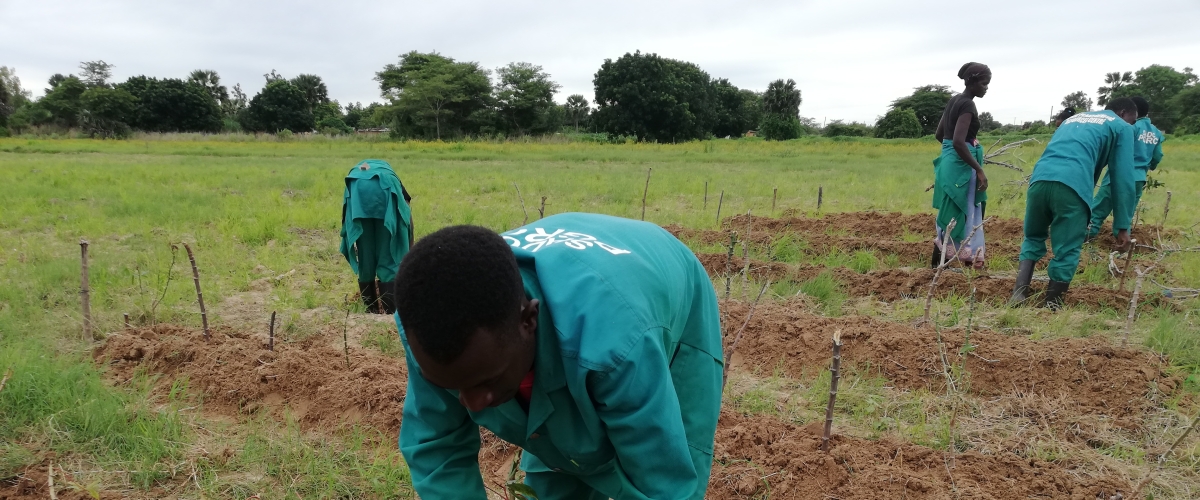
By Dorcas Kabuya Chaaba
Plant Genetic Resources Centres (PSRC) are a strategic resource for sustainable crop production. They play an essential role in safeguarding food and nutritional security for now and the future. They help bridge the past and future by ensuring the continued availability of genetic resources for research, breeding and improved seed delivery for sustainable and resilient agricultural systems. Achieving this task requires continuous crop improvement and variety adaptation to different agro-ecological regions.
Zambia Agricultural Research Institute (ZARI), through its National Plant Genetic Resources Centre (NPGRC), has this year safety duplicated 260 sweet potatoes and 40 cassava collections at the SADC Plant Genetic Resources Centre (SPGRC). This is the first time in the country's history for NPGRC to undertake such an initiative since the establishment of the gene bank in 1989.
Principal Assistant Biometrician Masiye Tembo disclosed that 260 collections of sweet potatoes and 40 collections of cassava which are farmer varieties, had been duplicated at SPGRC to mitigate the loss. Mr Tembo noted that the loss of genetic diversity reduces the chances for sustainably managing resilient agriculture in the advent of adverse climatic conditions. "Previously, we had conserved the collections of these root and tuber crops in the field gene-bank at Mount Makulu Research Station. Unfortunately, the crops were wiped off due to lack of a functional irrigation facility coupled with diseases outbreak," he explained.
He added that to avert the earlier challenges that led to the extinction of the root and tuber seed collection at the filed Genebank at Mt. Makulu research station, the procuring of an irrigation system is underway. Additionally, the institute's Pathology section has also heightened surveillance measures and screening of the crops for pests and diseases.
Mr Tembo also disclosed that ZARI, through its NPGRC, plans to further safety duplicate sweet potato collections to the International Potato Centre (CIP) in Peru, in South America. Safety duplication is the process of duplicating genetically identical sub-samples of a collection to mitigate the risk of its partial or total loss caused by natural or man-made disasters. This process is crucial because it assures good security regardless of the situation and protects the breeding endeavours for future varieties of the crops. For example, when war broke out in Syria around 2012, the entire Genebank was reduced to ashes, but because Syria had taken the initiative to safety duplicate their Genebank materials at Svalbard Genebank in Norway, the process of restoring and rebuilding the national Genebank after the war was more straightforward.
Mr Tembo added that the collections for sweet potato were from Copperbelt, North-Western, Eastern and Southern Provinces, while cassava collections came from Luapula and Northern Provinces. He further added that farmers have always had their local varieties, which researchers in breeding programmes use to develop improved varieties that are tolerant to harsh climatic conditions, diseases, and pests. "The idea of dealing with both local or farmer varieties and improved varieties is to provide access to a diverse range of seeds that farmers need at their doorstep," he emphasised. He mentioned Kyapatala, Bina Viki, Kingovwa, Ze Blue and Zambezi as the notable farmer preferred sweet potato collections while cassava, its Ngulula, Fentule, and Chilima Beni, Nakulu Bwalya and Chililalila.
And Principal Agricultural Research Officer at ZARI, Graybill Munkombwe, stated that farmers play an essential role in conserving and sustainable utilisation of seed collections. Mr Munkombwe noted that farmers are custodians of local agricultural materials through their own established community seed banks, adding that farmers play a critical role in safeguarding the local seed varieties. "As part of our mandate at the NPGRC, we run what we call restoration programmes to communities which have lost certain local seed varieties due to natural disasters," he added.
Community seed banks tend to focus on specific crops that are locally important. Some have an emphasis on reviving the traditional crops associated with local culture. Well-managed gene-banks at community or national level both safeguard genetic diversity and make it available to breeders. The value of conserving crop genetic resources is realised only through their effective use. This calls for the establishment of strong linkages between farmers, researchers, breeders and ultimately consumers.
It is envisaged that this process will go a long way in safeguarding Zambia's collection of root and tuber germplasm currently being conserved at NPGRC and further propels the centre's impetus to undertake more varied, diverse collection endeavours for additional stores of vegetatively-propagated germplasm.
The safety duplication of these root and tuber crops was facilitated by the Global Crop Diversity Trust (Crop Trust) through the Seeds for Resilience (S4R) project, under the auspices of the KfW Development Bank of Germany.
The author is an Agriculture Information Officer at the National Agricultural Information Services. She is also CCARDESA Information, Communication and Knowledge Management (ICKM) focal point person for Zambia.






